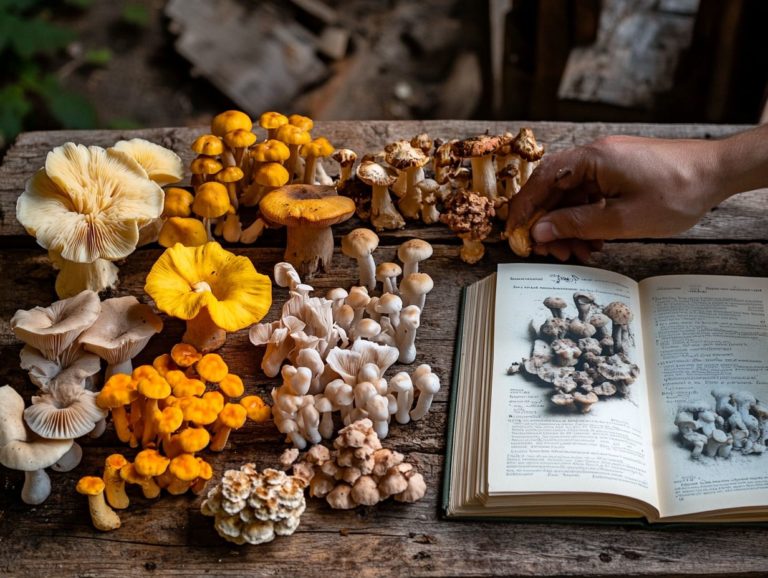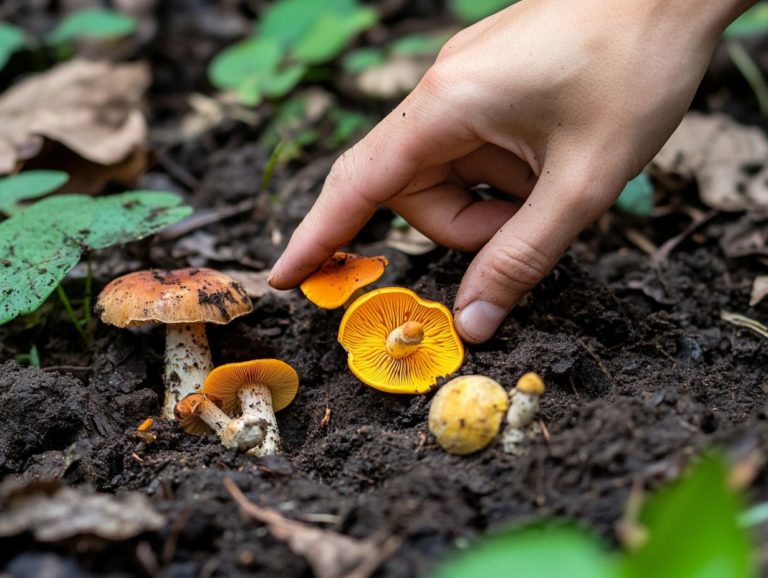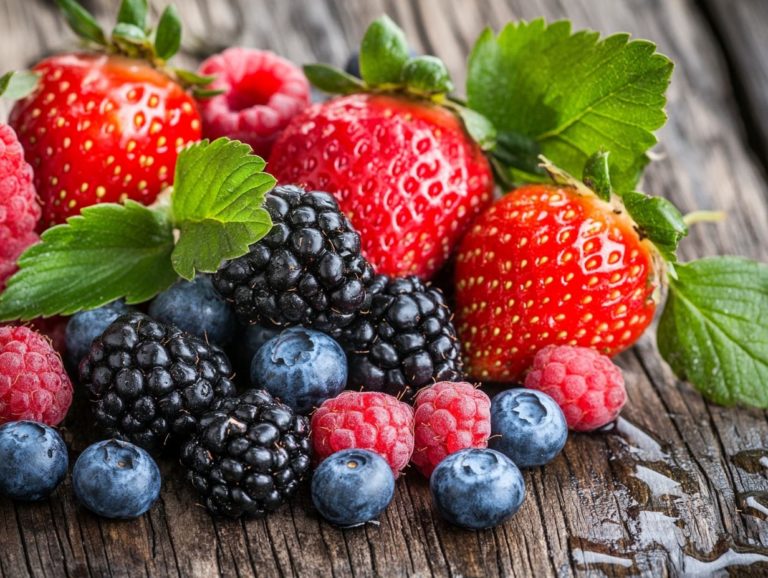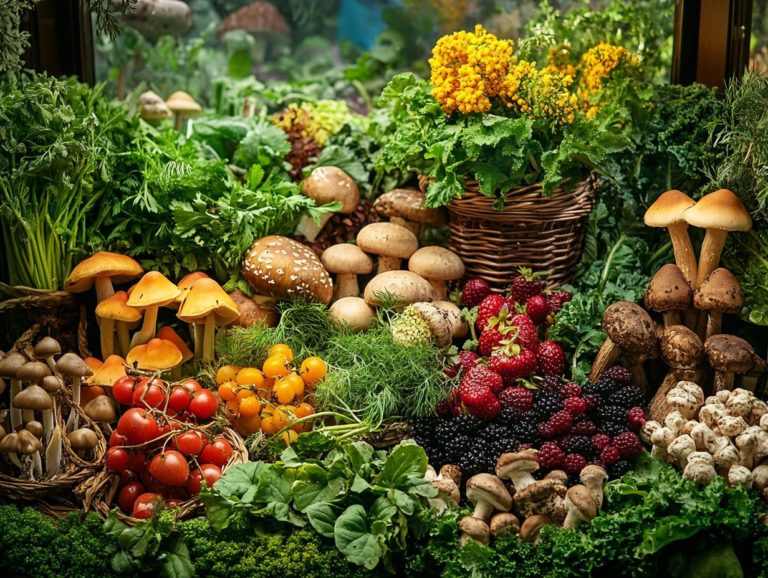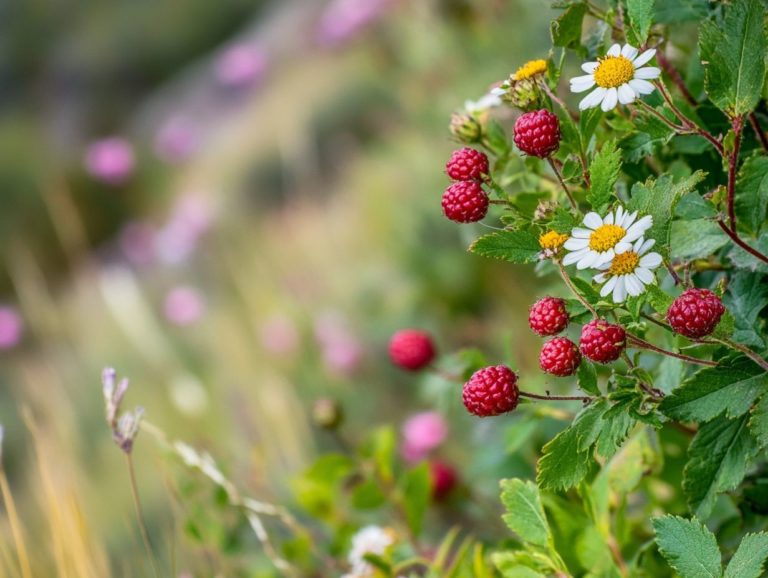The Science Behind Plant Identification
Learning to identify plants can be an exciting journey for nature lovers, whether you re a dedicated gardener, an adventurous hiker, or simply a nature enthusiast eager to explore the flora around you.
This article delves into the importance of accurately identifying plants, outlining essential concepts and tools necessary for success, including plant systematics and the science of naming and classifying plants (taxonomy). It also tackles common misidentifications, offering practical tips to sharpen your skills.
You will also discover a variety of resources designed to assist you on your journey toward becoming a more adept plant identifier.
Join in as you uncover the captivating science behind recognizing the lush greenery that surrounds you.
Contents
Key Takeaways:

- Plant identification is crucial for understanding and preserving the natural world.
- Understanding plant characteristics and using proper tools and techniques are essential for accurate identification.
- Taxonomy plays a vital role in plant identification, providing a scientific framework for categorizing and naming plants.
The Importance of Plant Identification
Plant identification holds immense significance. It deepens your understanding of biodiversity and facilitates informed conservation efforts.
By accurately identifying plants, you can appreciate their unique roles within ecosystems, grasp their distinctive characteristics, and leverage this knowledge in practical applications such as gardening, agriculture, and environmental preservation.
Mastering plant identification enriches your overall appreciation of nature and fosters sustainable practices within communities, particularly in biodiversity-rich regions like North America and Bolivia.
Why is Plant Identification Important?
Understanding the significance of plant identification is vital for anyone interested in botany or ecology. It forms the bedrock for effective conservation efforts and informed decisions regarding local flora.
It s not just about recognizing plants; proper identification enhances environmental education. It nurtures a deeper appreciation for biodiversity and the intricate web of ecosystems. Misidentifying plants can lead to serious consequences, such as inadvertently introducing invasive species or overlooking essential native plants that support local wildlife.
Using educational resources like field guides, such as the Merrill guide, and attending workshops empowers you to connect with your surroundings more thoughtfully, fostering a sense of stewardship for native plants, including wildflowers and trees.
Ultimately, cultivating this knowledge not only enhances your personal experiences but also contributes to greater ecological awareness and community engagement.
Key Concepts for Identifying Plants
To effectively identify plants, you must first grasp the fundamental concepts that underpin the process. This includes a solid understanding of plant anatomy, recognizing physical features such as leaves and flowers, and appreciating the role of various identification tools.
Understanding Plant Characteristics
Understanding the characteristics of different plants, such as their visual attributes, leaf lobes, and margins, is essential for accurately identifying and categorizing them within various plant families.
These features can reveal a great deal about a plant’s habitat and its evolutionary adaptations, aiding in the identification process. For instance, leaf shapes can vary tremendously among species; some may have broad, heart-shaped leaves, while others present narrow, needle-like structures.
Leaf color can range from deep green to striking shades of red or purple, reflecting varying levels of chlorophyll the green pigment that helps plants convert sunlight into food and other pigments that influence photosynthesis.
Additionally, the arrangement of leaves on the stem whether they are alternate, opposite, or whorled plays a crucial role in distinguishing related species, offering valuable insights for botanists and plant enthusiasts like you.
Tools and Techniques for Identification
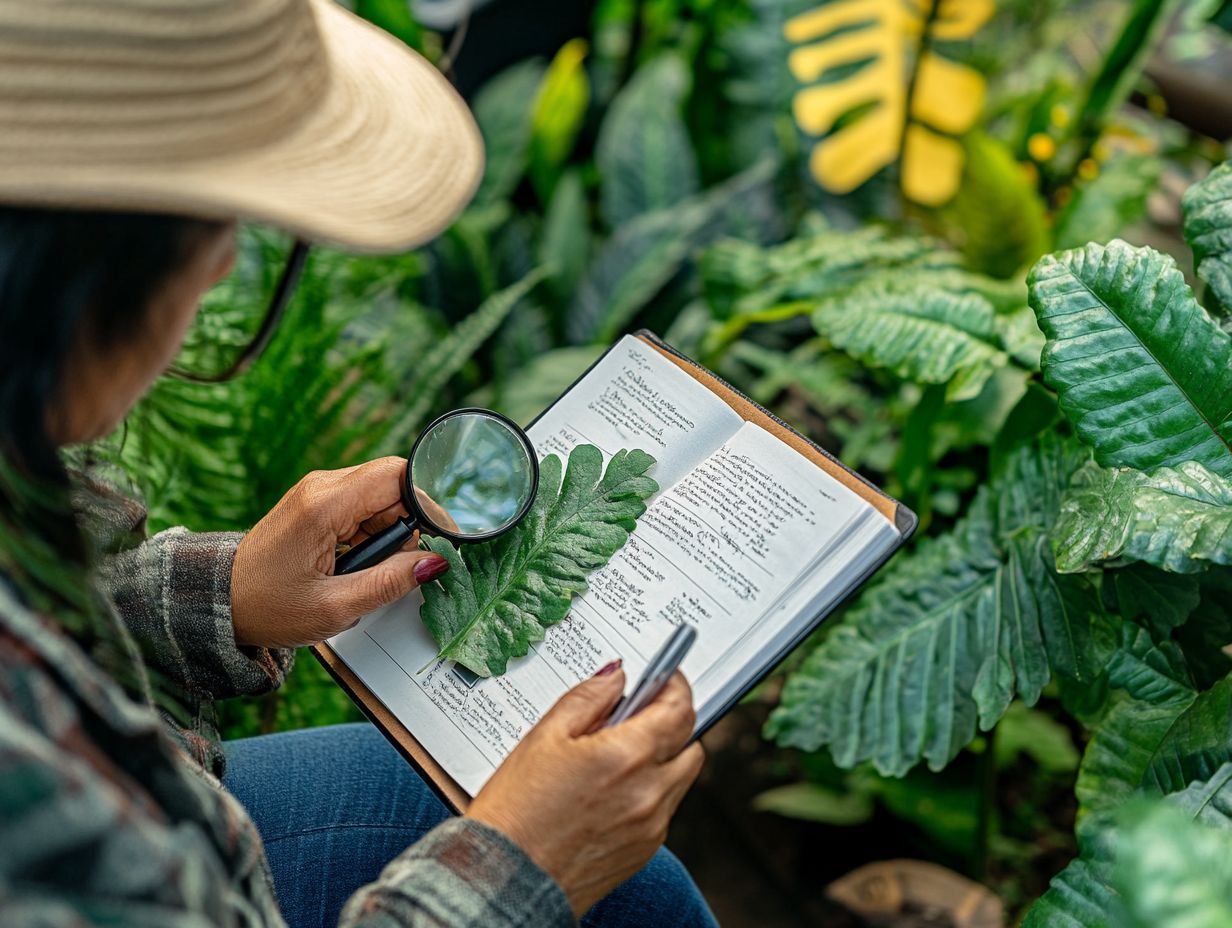
Utilizing effective tools and techniques, such as field guides and dichotomous keys, is essential for mastering the plant identification process. These resources enhance your ability to accurately recognize various plant species.
They help you navigate the complexities of botany, allowing for a systematic approach to distinguishing between closely related specimens. For example, a dichotomous key is a tool that helps you identify plants by answering a series of questions about their features, leading you to the correct identification through distinct characteristics for comparison.
Specimen collection is crucial in this journey. Tools like the plant press ensure that your samples are preserved in an organized manner. Preserving your samples properly helps create herbarium collections, which are crucial for study and reference. These collections serve as invaluable references for both enthusiasts and researchers, facilitating ongoing studies and conservation efforts.
The Role of Taxonomy in Plant Identification
Taxonomy is key to unlocking the wonders of plant identification, offering a structured framework for classifying and naming various plant species. This system enables you and fellow botanists to communicate effectively about shared characteristics and plant families, enhancing your understanding and appreciation of the botanical world.
Defining Taxonomy and its Use in Identification
Defining taxonomy is essential for understanding its role in plant identification. It encompasses the principles and rules that govern the classification and naming of plant species. This intricate system has developed over centuries and provides not just a framework for naming but also reflects the evolutionary relationships among organisms.
Taxonomy aids botanists and researchers like you in recognizing and categorizing the myriad plant species, fostering clearer communication within the scientific community. Historical practices began with early naturalists cataloging plants based on observable traits. Over time, methods evolved through influences from genetics and molecular biology.
As knowledge has advanced, classification systems have adapted, emphasizing not only physical characteristics but also genetic and ecological factors. This evolution enriches your study of plant diversity and conservation.
Common Misidentifications and How to Avoid Them
Grasping the common misidentifications in plant identification can greatly elevate your accuracy and confidence. It’s crucial for you to familiarize yourself with potential mistakes and seek expert guidance when you encounter challenges.
Factors that can Lead to Misidentification
Several factors can lead you to misidentify plants. These include reliance on common names, the visual similarities that exist between species, and perhaps a limited understanding of their distinct characteristics.
This misidentification often arises from the incredible diversity within plant families. Certain species may closely resemble one another in terms of shape, color, or leaf structure. For example, you might encounter two species that share strikingly similar flowers but differ significantly in their habitats or practical uses.
The nuances of various growth stages can add to the confusion, as immature versions of certain plants may not showcase the characteristics typically used for identification. Such challenges underline the importance of grasping the specific visual traits that define each species. It s also essential to consider contextual factors like geographical distribution and environmental adaptations.
Tips for Accurate Plant Identification

Ready to unlock the secrets of plant identification? To ensure accurate plant identification, employing strategies such as careful observation and using trustworthy identification tools can significantly enhance your ability to correctly identify plants.
Seeking expert help can also be beneficial. Observing characteristics like leaf shape, flower structure, and growth habit offers invaluable clues.
If you’re eager to deepen your understanding, enrolling in botany classes provides structured learning from knowledgeable instructors. This lays a solid foundation in plant taxonomy, the science of naming and classifying plants, and ecology.
Collecting specimens while adhering to ethical practices allows for tactile learning and facilitates comparison during identification. Expert guidance from handbooks or local botanical gardens is crucial for gaining insights that may not be readily apparent in books alone.
This blend of observation, education, and practical experience enriches your journey of plant identification.
Resources for Plant Identification
You have a wealth of resources at your fingertips for plant identification. From regional field guides to sophisticated online tools and comprehensive botanical manuals, there s something to assist everyone whether you re just starting out or you re a seasoned botanist honing your skills.
Don t miss out on these amazing resources that can enhance your plant identification skills!
Online and Offline Tools for Identification
Both online and offline tools are essential in your journey of plant identification. They offer invaluable resources such as field guides, botanical manuals, and interactive online platforms that provide expert insights.
Mobile applications and online databases can elevate your identification experience. These tools enable you to upload pictures and receive instant feedback from a vibrant community of botanists and enthusiasts.
Leveraging these digital resources can significantly shorten your learning curve. They seamlessly integrate plant features, images, descriptions, and range maps vital for precise identification.
On the flip side, traditional methods, like comprehensive regional field guides and botanical gardens, promote hands-on learning. This allows you to engage directly with the natural world.
Together, these complementary approaches enrich your identification practices, expanding your knowledge base and fostering a deeper connection with the botanical environment.
Frequently Asked Questions
1. What is the science behind plant identification?
The science behind plant identification refers to the various methods and techniques used to classify and identify different plant species based on their physical characteristics, genetic makeup, and environmental factors.
2. Why is it important to understand the science behind plant identification?
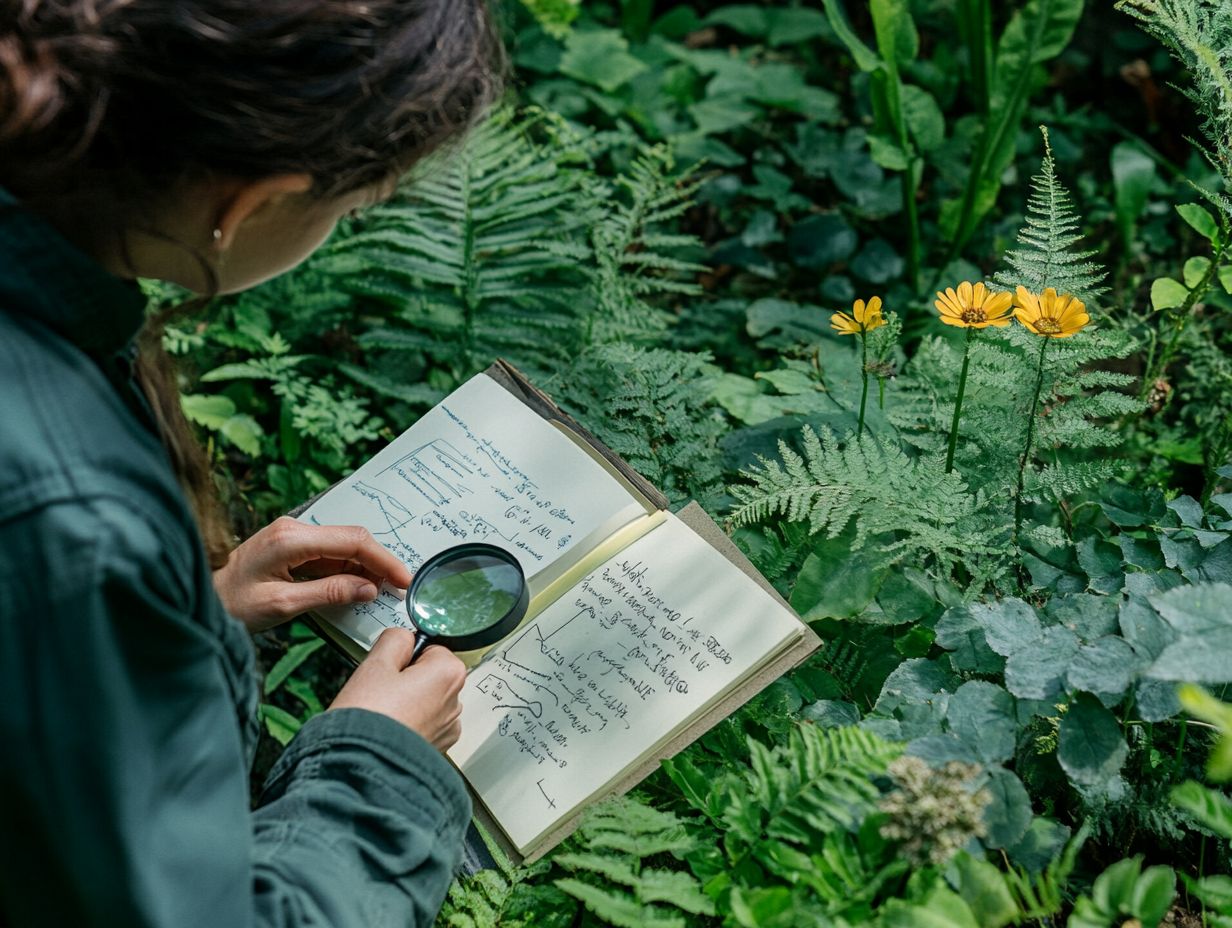
Understanding the science behind plant identification is crucial for accurately identifying and classifying plants. This knowledge is necessary for various fields such as agriculture, horticulture, and medicine, and it helps in the conservation and protection of plant species. Familiarizing yourself with the basics of plant identification can greatly enhance your skills in this area.
3. What are some techniques used in the science of plant identification?
Some techniques used in plant identification include morphology, which examines the physical characteristics of plants, and DNA analysis, which looks at the genetic makeup of plants. Other methods include using dichotomous keys, identification tools, and field guides.
4. How do environmental factors play a role in plant identification?
Environmental factors such as climate, soil type, and altitude can greatly influence the growth and physical characteristics of plants. Understanding these factors can help narrow down the possible plant species and aid in plant identification.
Grab your guide and get started on your plant identification journey now!
5. Can technology be used in plant identification?
Yes! Technology like computer software and mobile applications can help you identify plants quickly. These amazing tools utilize image recognition to match your photos with a vast database of plants!
6. Who utilizes the science of plant identification?
Plant identification is an exciting science used by many! Professionals like botanists and ecologists rely on it, but so do farmers, gardeners, and nature enthusiasts just like you!

